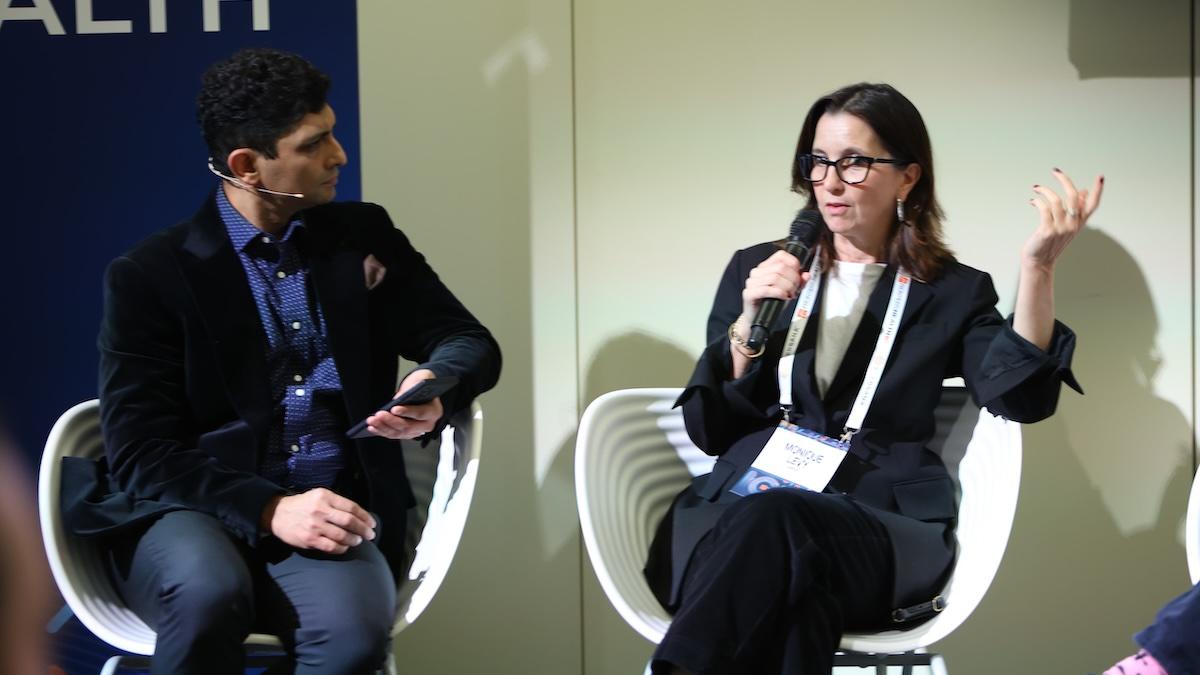How generative AI Is transforming healthcare

With growing digitisation, there’s no shortage of information you can find on the internet. Digesting, understanding, and then distilling huge amounts of information for a specific purpose on any topic has become a challenge - that’s where large language models (LLMs) such as ChatGPT come in.
Generative AI has quickly become a major consideration in healthcare, but, as with any industry, decision-makers need to understand how to use the technology to capitalise on its potential. While success is a priority, patient care and the risks surrounding it must also be front of mind in such a human-centric sector. Generative AI use cases are on the rise across different health segments, with a variety of solutions already available and more likely to appear as the technology evolves.
Emerging generative AI is now present in all areas of healthcare, from pharmaceutical firms to service providers and public health agencies. Companies need to manage the potential risks that come with integrating AI into existing and new systems, including false results, misuse of patient data, and an overreliance on AI-generated support from the patients themselves.
To implement generative AI correctly, a strong foundation is needed. So, healthcare organisations should create a business-wide strategy, build data systems, develop strategic partnerships, and work alongside the broader industry ecosystem.
Generative AI entails some clear uncertainties and risks, but it can also significantly increase efficiency, improve the quality of patient care and benefit healthcare organisations.
Why leaders need to capitalise on AI technologies
As the market evolves, more disruptive technologies will start to be incorporated into UK healthcare systems. Generative AI technologies make it easier to gather patient data and make healthcare more advanced and accessible using deep-learning algorithms to create new content such as text, audio, code, and more.
This can help doctors, researchers, and scientists review, interpret, and even suggest solutions to complex medical issues. AI is being used in healthcare in everything from virtual assistants to natural language applications that optimise clinical documents storage to robotically-assisted surgical devices. Generative AI also represents a way to help unlock a piece of the unrealised $1 trillion of improvement potential present in the industry. It can do so by automating mundane and error-prone tasks, bringing years of clinical data to the fore in seconds, as well as modernising a health systems infrastructure.
This is by no means new, with one study in the UK using an AI-powered chatbot app (NHS111 powered by Babylon) that was able to divert nearly half of all patients from their primary care service to a self-managed outcome, while maintaining nearly the same referral rate (22% versus 21% for live people) to urgent and emergency care.
Better services for patients
Even before the pandemic, telehealth and remote care options were growing, with investment in this new future of healthcare already underway and the global telehealth and telemedicine estimated to reach $285.7 billion by 2027.
These options give healthcare providers the ability to reach more people and make care more accessible to those who otherwise can’t get it, including those living in rural or isolated communities, those unable to travel easily, and those without access to specialised healthcare.
Even pre-pandemic, 65% of communication between people and healthcare facilities was happening on mobile phones, tablets, or laptops to research medical conditions, find basic health information, research doctors, hospitals, and medical facilities, and book medical appointments.
Another trend in healthcare is digital therapeutics: software products used in the treatment of medical conditions. Similar to customer wellness apps, but focusing on delivering clinical outcomes, digital therapeutic software undergoes rigorous scientific testing and approval by certified healthcare bodies like the UK’s Department of Health and Social Care and the Medicines and Healthcare products Regulatory Agency (MHRA). These are typically used as a preventative measure for people at risk of developing more serious illnesses or those who have pre-existing conditions.
Patients engage with digital therapeutic apps to benefit from basic guidance on treatments, such as how to administer first aid, address a more complex condition, like diabetes or asthma, using cognitive stimulation to promote behavioural change and be educated on medical equipment, such as heart defibrillators or blood glucose trackers.
Impactful digital technologies
IoT is fast becoming a central foundation for making healthcare more advanced and accessible. These devices can typically be controlled remotely through software applications and connected infrastructure and send patient data through strategic touchpoints.
Wearable technology connected to an IoMT device can help clinicians monitor patients, usually in a non-clinical setting. This technology is growing in use because it’s easy to wear, with this making it onto the #3 most impactful digital technologies list in the UK back in 2021.
The augmented reality (AR) and virtual reality (VR) healthcare market is also set to reach nearly $10 billion by 2027. The technology’s accurate 3D modelling of human organs and tissues gives researchers and doctors a chance to test medicines virtually to predict how a live human would respond. Also known as virtual patients or organs-on-a-chip, AR and VR technology can reduce live testing on animals and fast-track human clinical trials.
Clinical operations are another area that can benefit from the potential efficiencies of generative AI. Today, hospital providers and administrative staff are required to complete dozens of forms per patient, not to mention other administrative tasks that take up hours and can contribute to hospital employee burnout.
Work smarter, not harder
The first step for healthcare executives seeking to implement generative AI is to determine how the technology will best serve them.
Generative AI has the potential to reimagine many areas of the healthcare industry in ways not witnessed with previously available technologies. Once this technology matures, it could also converge with other emerging technologies, such as virtual and augmented reality or other forms of AI, to transform healthcare delivery.
But first, decision-makers should prioritise the responsible and safe use of this technology. Protecting patient privacy, creating the conditions for fair clinical outcomes, and improving the experience of healthcare providers are all top priorities, so, getting started and understanding the implications today is the first step in making them a reality.












